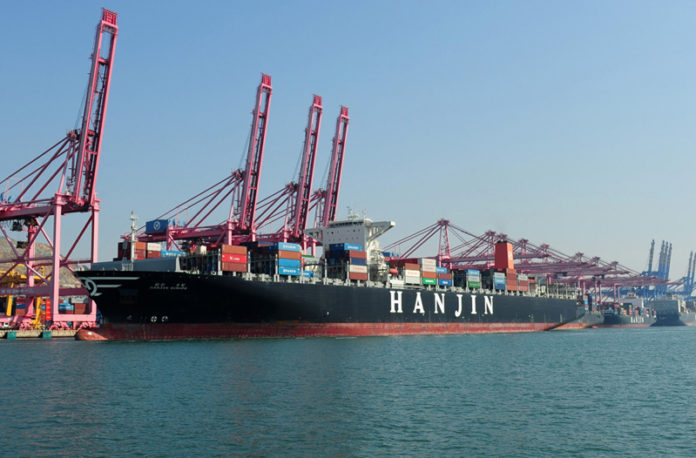
For many of Shippers stranded inventory is[ds_preview] the number one priority after the impact of the demise of the world’s seventh largest containership operator. Benchmarking and market intelligence platform Xeneta says this has the potential to redefine the container shipping landscape.
The Oslo-based company crowd-sources shipping rate data from more than 600 international businesses, many of whom have now been hit by stranded inventory, rising prices and claims of under-capacity from the remaining liners.
»The Hanjin saga has the potential to redefine the container shipping landscape. For an industry that has struggled with collapsing rates, severe overcapacity (8.1% at the beginning of 2016) and devastated profit margins – with even Maersk down 90% year on year for Q2 – this marks an opportunity to finally regain the upper hand at the negotiating table,« comments Xeneta CEO Patrik Berglund.
»The Hanjin saga has the potential to redefine the container shipping landscape«
»Hanjin’s failure resulted in an immediate capacity reduction of up to 8 % in transpacific and Asian-European routes and this gives competitors an obvious fillip. We’ve seen 2M moving to launch a new transpacific service, while the feedback we’ve received from our community details rising rates, stretched capacity, claims of broken contracts – when agreed at low prices – and a need to go to the spot market, where quotes of between one and three months are not being contracted.
Berglund says that for many of the firm’s community it’s the stranded inventory that’s the number one priority, with an estimated 14.5 bn $ of goods marooned on vessels worldwide, belonging to some 8,300 different companies.
That’s the immediate concern, but, as he explains, the long-term is also causing consternation: »Short term rates were already rising on the main Far East Asian to North European port route, the world’s most important trade channel, since hitting lows in March. Then the market average price for a 40’ container stood at 552 $, in late August it climbed to 1,172 $ and now its 1,834 $. Transpacific routes have climbed from 839 $ in March to 1,887 $ now.
»As the year comes to an end the tendering/bidding season starts for many European shippers. This will be a wake up call for the large-volume shippers who have maybe become accustomed to basking in long-term contracts at low rates.«
Stability is sorely lacking, concludes Berglund, and Hanjin could be the tip of the iceberg, as lenders tire of propping up players that have been limping along in this difficult market for too long. For the time being the carriers will enjoy exploiting the change of fortunes and their overcapacity gives them the means to step in and fill Hanjin’s hole. But this isn’t the long-term fix the industry needs, the CEO says.



















